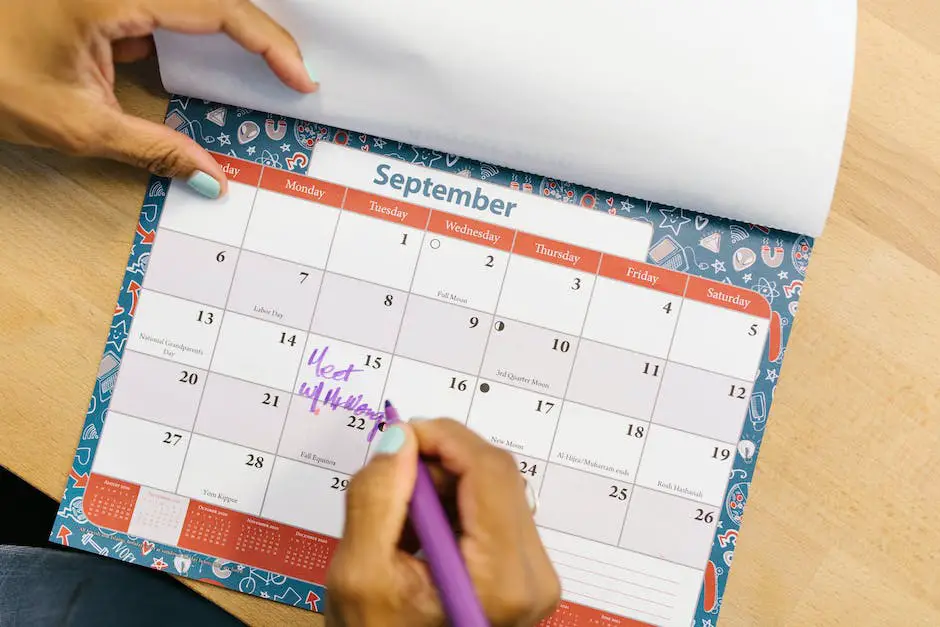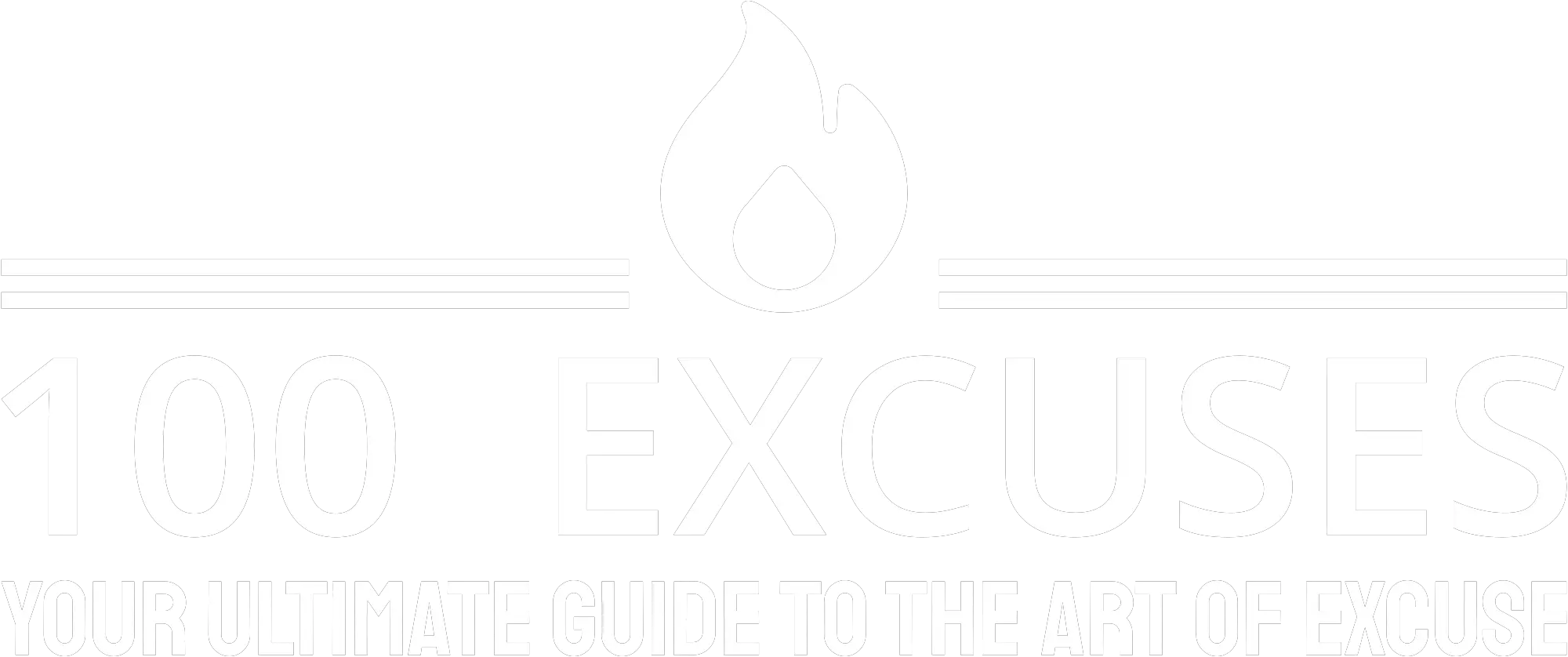Navigating the waters of workplace commitment can occasionally pose challenges when personal circumstances interfere with professional responsibilities. At times, the need to craft a creative and plausible excuse for missing a work meeting arises, yet striking the right balance between believability and professionalism is key to avoiding any negative impact on one’s career. As adults, developing the finesse required for such situations is crucial. This essay aims to empower individuals with the ability to articulate their reasons for absence in a manner that upholds workplace etiquette and retains the respect of peers and superiors. We will explore the art of creative writing to shape compelling narratives, while keeping within the bounds of professional conduct, and delve into the nuances of effective communication to ensure that our message not only resonates with authenticity but also preserves the integrity of our professional relationships.
Creative Writing Skills
# Unleashing Creativity: The Art of Crafting Believable Excuses
Artistry isn’t confined to canvas and clay. It infiltrates every aspect of life, a dance with imagination and reality—and sometimes, you need a pinch of creativity to paint over life’s little ‘oops’ moments with a believable excuse. Transforming the mundane justification into a believable work of art is a creative exercise all its own. Here’s how to master this craft with finesse and credibility.
Understand Your Audience
Before putting quill to canvas—or pen to paper—grasp the perspective of your audience. Different strokes for different folks, as they say. The key lies in crafting an excuse that resonates with their expectations and views of the world. Think about who they are, what they value, and most importantly, how they perceive you. Align your narrative with these insights to create a backdrop for your excuse that feels authentic to them.
Context is King
A stand-alone excuse, much like an unplanned splatter of paint, might grab attention but lacks depth and meaning. Embed your excuse within a believable framework, carefully considering the context of the situation. Just as an artist would consider the interplay of light and shadow, examine the elements at play—time of day, location, prior commitments, and relevant happenings. Let these details be your palette to give color and life to your excuse.
Detail, but not Too Much
In the studio of falsehoods, less is often more. An excuse dripping with superfluous detail is like an overworked painting—immediately suspect. Provide just enough brushstrokes to create a plausible picture, leaving room for interpretation. Too much specificity can trip you up. Remember, a simple narrative told with confidence often has the most impact.
Emotion, the Subtle Hue
Inject a subtle layer of emotion into your narrative. This should be nuanced, much like the delicate touch needed to add a hint of verisimilitude to a facial expression in a portrait. The emotion—be it urgency, disappointment, or fatigue—should enhance the narrative without overwhelming it. When your excuse is draped in a genuine emotional cloak, it can be more easily embraced.
Timing, the Invisible Stroke
Just as the emergence of art movements springs forth in opportune moments throughout history, the timing of your excuse can bolster its credibility. The right moment can make a difference between suspicion and acceptance. Aim for a time that won’t invite too many prying questions. Like a mural unveiled at just the right second, your excuse will function best when it meets the moment with grace and ease.
Flexibility, the Art of Adaptation
A masterpiece is not created in a singular, unchanging flow. It adapts, evolves, reacts. Likewise, be prepared to modify your excuse on the fly, responding to questions or doubts with the versatility of a sculptor willing to redefine a form. Your ability to adapt while maintaining the core narrative is like quick-drying paint; it allows for alterations without diminishing the overall effect.
Practice, The Rehearsal
An actor rehearsing lines becomes the character; you must inhabit the excuse. Practice it, not to the point of memorization, but until it becomes a story you can tell with ease. Before the resurrection of your tale, ensure it flows naturally, and any knots can be untangled with adroit mental dexterity.
Like art, the best excuses are those that harness creativity to convey truth, or at least the semblance of it, to the observer. They require forethought, a keen eye for detail, and just a hint of dramatic flair. As with any creative endeavor, crafting believable excuses is an art form unto itself—one that is honed through practice, finesse, and a touch of imagination.

Understanding Workplace Etiquette
Navigating the Labyrinth of Legitimate Absences: Acceptable Reasons for Missing a Meeting
In the waltz of workplace engagement, meetings often serve as the rhythm to which our workdays dance. Yet, occasionally, even the most dedicated members of the team find themselves on the sidelines, unable to join in the choreography. It’s at these times that understanding the acceptable reasons for missing a meeting—that delicate intersection of professionalism and personal necessity—becomes vital.
Health Is Wealth—Even in the Conference Room
When health falters, it is universally acknowledged that well-being comes first. An individual under the weather is not only less productive but also a potential harbinger of contagion. Whether it’s a cold that has taken the voice, a fever that clouds the mind, or a more significant health emergency, self-care prevails over all. Thus, notifications of absence due to illness are typically met with nods of understanding.
Personal Emergencies: A Pause in Professional Endeavors
The tapestry of life is often unpredictable, and emergent situations—such as a family member in need or a personal crisis—warrant immediate attention. These circumstances speak for themselves; they’re moments when professional priorities gracefully step aside for the protagonist role of humanity.
Prior Commitments: The Calendar Conflict Conundrum
Prior commitments are a test of one’s organizational skills and integrity. If another unmovable meeting, a pre-approved vacation, or a professional development opportunity was on the books first, transparency and advance communication are key. While a last-minute clash might ruffle feathers, a clash forewarned is a clash that can be carefully navigated by all.
Technical Difficulties: The Modern Misstep
Ah, technology—a muse and a menace. In an era where virtual meetings connect across time zones, a spotty internet connection or a disastrous device failure can excuse one from digital attendance. Yet, this modern misstep requires a swift effort to resolve the issue or seek alternative means of participation, to demonstrate resilience and resourcefulness.
Mandatory Obligations: When Duty Calls Beyond the Desk
Jury duty and military obligations are the siren calls that employees must heed, often by legal compulsion. The civic and governmental summons eclipse the regular rhythm of work responsibilities, and responsibility for these rests with higher authorities than office management.
Avoiding the Artifice of Poor Excuses
Departing from authenticity and fabricating a cover story will often backfire spectacularly. The artistry lies not in the inventive excuse but in the genuine reason; a true brushstroke of reality is more respected than the most elaborately sketched fiction.
Bound by the Unwritten Code of Respect
Respect is the final seal on the envelope of acceptable explanations. An excuse presented with consideration for the team’s time and efforts, along with an offer to catch up on what was missed, completes the narrative with a gesture of commitment to the collective mission.
Meetings missed can reflect an understanding of the painted boundaries and shades of professional life. When the brush of circumstance paints one out of the office, the canvas of cooperation relies on these norms to maintain its harmony and balance.

Effective Communication
Crafting an impeccable excuse transcends merely avoiding the red flags of deceit—it is an art form of communication where integrity meets necessity. As we delve further into the nuances of navigating workplace dynamics, let’s explore additional strategies to ensure that when we must present an excuse, it resonates with honesty and sustains the trust we’ve built with our employers.
Remember the ‘Why’ Behind Your Excuse
When articulating the reason for your absence, focus on the core ‘why’. Clear communication about why it was necessary for you not to fulfill your duty speaks volumes about your priorities. If an excuse is rooted in a desire to take care of oneself or attend to significant life events, it underscores a fundamental human connection that most employers should respect.
Document the Excuse When Appropriate
In certain scenarios, providing documentation can substantiate your excuse. For example, if you were unable to work due to a medical appointment, offering a note from the healthcare provider demonstrates transparency. This should be done judiciously, and only when it aligns with the nature of the excuse and the expectations of the workplace.
Acknowledgment of Disruption and Willingness to Mitigate
One cornerstone of a well-received excuse is the acknowledgment of any disruption caused by your absence. Follow this by actively proposing solutions. Whether it’s catching up on missed work, rescheduling meetings, or delegating tasks – offering to mitigate the impact shows proactiveness and a strong work ethic.
Maintain Consistent Communication Channels
Communication is not a one-off event but a continuous process. Keep your employer updated if circumstances evolve or if there is an ongoing issue. This doesn’t mean overwhelming them with messages, but rather maintaining a flow of information that is necessary and pertinent to your professional relationship.
Embrace Accountability
Accountability is where the trust factor truly solidifies. Owning up to the consequences of your absence and taking responsibility for any resultant issues is powerful. It shows that you’re not just excusing an absence but also standing by the professional ethos of taking responsibility for your role and duties.
Respect Professional Boundaries
While being transparent, it’s also crucial to understand professional boundaries. Revealing overly personal details or expecting your employer to cope with recurrent avoidable absences can breach these bounds. Striking a balance between personal explanations and professional decorum is key.
Art, at its core, is about expression and connection—and so is effective communication. Whenever one must relay an excuse for not upholding an obligation, it’s essential to remember that how you convey the message can either fortify or fracture your professional relationships. The goal is always to paint a picture of a responsible and trustworthy individual, using the palette of honesty and respect to color every interaction with your employer.

Photo by taelynnmaephoto on Unsplash
The elegance of managing work-related commitments lies in the adeptness with which one can navigate unexpected life events while maintaining the quality of their professional life. With the insights gained from this discussion, creative excuses can be transformed into respectful communications that honor the complexity of our human experience without compromising workplace integrity. By valuing creative writing, understanding workplace etiquette, and mastering effective communication, we ensure that the occasional missed meeting is but a minor ripple in the ongoing narrative of a successful career. In the fluid dynamics of the work-life balance, let the tools and understandings gleaned here serve as your guide to preserve both your professional standing and your peace of mind.


Recent Comments